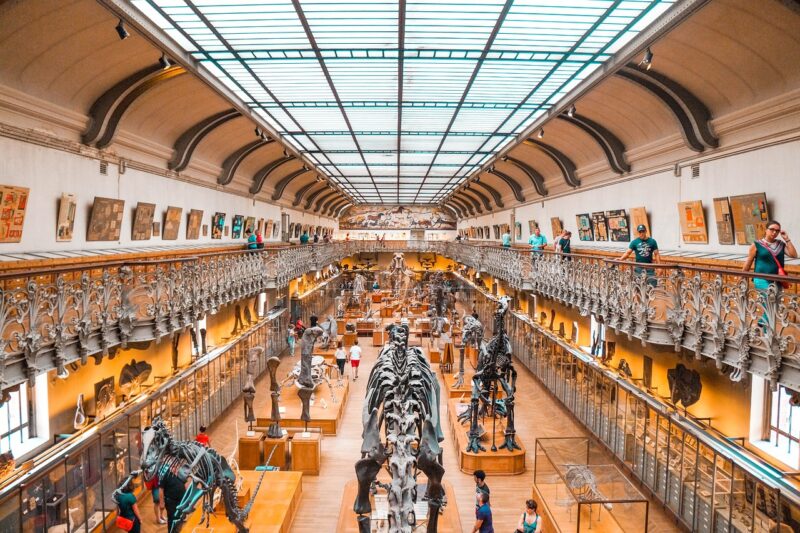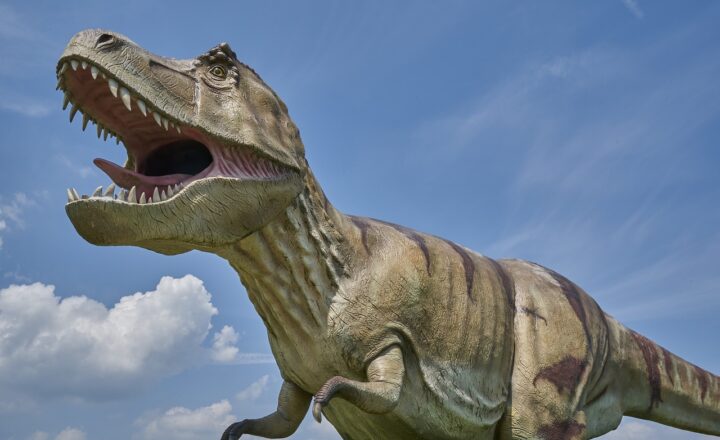The Top Herbivorous Dinosaurs: How Plant-Eaters Thrived in Prehistoric Ecosystems
November 14, 2024

Dinosaurs are popularly known for their fierce carnivorous species, but a significant portion of the dinosaur kingdom was made up of herbivorous creatures. These plant-eating giants played crucial roles in their ecosystems, influencing vegetation and serving as prey for carnivores. In this article, we will explore some of the most prominent herbivorous dinosaurs, their adaptations, and how they thrived in prehistoric environments.
1. The Role of Herbivorous Dinosaurs in Ecosystems
Herbivorous dinosaurs varied in size and form, but their common trait was their diet, which consisted predominantly of plants. Their existence contributed to maintaining the balance of prehistoric ecosystems. These giants not only fed on vegetation but also facilitated the growth of various plant species by aiding in seed dispersal and nutrient cycling through their waste.
Moreover, herbivores often served as a food source for predators, thus forming an essential part of the food web. The relationship between herbivores and carnivores fostered a dynamic balance within prehistoric ecosystems, making the study of herbivorous dinosaurs critical in understanding our planet’s history.
2. Types of Herbivorous Dinosaurs
Herbivorous dinosaurs can be categorized into several groups based on their characteristics and how they fed. Below are some prominent families of herbivores:
a. Sauropods
Sauropods were among the largest dinosaurs, characterized by their long necks and tails. This group included famous species such as:
- Brachiosaurus: Known for its long neck which allowed it to reach high vegetation, Brachiosaurus was a colossal herbivore that thrived in lush environments.
- Argentinosaurus: One of the largest land animals to have ever existed, Argentinosaurus could reach lengths surpassing 100 feet, demonstrating how effective large body sizes were for foraging on higher foliage.
- Diplodocus: With its unique whip-like tail and elongated neck, Diplodocus could cover large areas for sustenance, optimizing its grazing patterns.
b. Ornithopods
Ornithopods were bipedal or quadrupedal herbivores known for their diverse adaptations that allowed them to efficiently forage. Notable examples include:
- Iguanodon: Recognized for its thumb spikes, Iguanodon could exploit various vegetation, showing versatility in its diet.
- Hadrosaurus (Duck-billed dinosaurs): With their flat, duck-like bills, hadrosaurs were efficient browsers that could process a range of plant matter, enhancing their survival possibilities in varying habitats.
c. Ceratopsians
Ceratopsians were characterized by their frills and horns, which served as defense mechanisms and in mating displays. Notable ceratopsians include:
- Triceratops: With its three distinct facial horns and large frill, Triceratops was one of the most formidable herbivores, capable of defending against predators.
- Pachyrhinosaurus: Known for its thick bosses where horns would typically be, this creature showcased adaptation to its environment, emphasizing survival.
3. Adaptations of Herbivorous Dinosaurs
The adaptations observed in herbivorous dinosaurs were critical for their survival. Some of the most notable adaptations include:
a. Dental Adaptations
Herbivorous dinosaurs evolved specialized teeth suited for grinding and processing tough plant material. Flat molars allowed for effective chewing, breaking down cellulose in plant walls to aid digestion.
b. Body Size
Larger body sizes in some herbivorous species provided several advantages, including deterring predators and enabling access to a greater quantity of foliage, which reduced competition. Conversely, smaller herbivores could adapt for speed, evading threats effectively.
c. Social Behavior
Many herbivorous dinosaurs lived in herds as a survival strategy. This social behavior provided safety in numbers, improved foraging efficiency, and protected young from predation.
4. Climate and Habitat Adaptations
The diverse habitats they occupied—from lush forests to arid plains—required herbivorous dinosaurs to adapt accordingly. For example, some species evolved to have efficient digestive systems to extract nutrients from tough, fibrous plants, while others developed short legs and sturdy bodies to navigate marshy terrain.
Additionally, many herbivorous dinosaurs lived during periods of significant climatic change, affecting vegetation patterns and prompting evolutionary responses. These adaptations showcase the resilience and evolution of herbivorous species throughout the Mesozoic Era.
5. Extinction Challenges for Herbivorous Dinosaurs
Despite their success, herbivorous dinosaurs faced numerous challenges that ultimately contributed to their extinction. Factors such as:
- Climate Change: Shifts in climate led to habitat loss and changes in vegetation, which could have severely impacted their food sources.
- Predation by Carnivorous Dinosaurs: As apex predators evolved, herbivorous dinosaurs faced increased predation pressure, leading to high mortality rates.
- Asteroid Impact: The Cretaceous-Paleogene extinction event, caused by an asteroid impact, drastically changed the planet’s climate and habitats, resulting in the extinction of many dinosaur species, including various herbivores.
Despite these challenges, the legacy of herbivorous dinosaurs endures, reflected in their rich fossil records and the insights they provide into Earth’s ancient ecosystems.
Conclusion
The story of herbivorous dinosaurs is one of adaptation, survival, and ecological significance. By understanding the diverse types of plant-eaters that thrived during the Mesozoic Era, we gain insights into prehistoric ecosystems and the balance of life on Earth. These fascinating creatures not only tell us about the past but also enhance our appreciation for the delicate connections that exist within our current ecosystems. As we unravel the mysteries of these remarkable herbivores, we gain a deeper understanding of the evolution of life on our planet.
Their adaptations and roles continue to intrigue paleontologists and enthusiasts alike, revealing the complex web of life that once roamed the Earth—an ongoing legacy that enriches our knowledge of prehistoric life.








